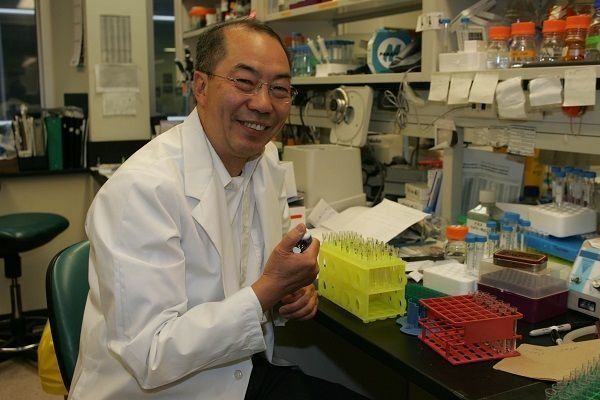
These five exciting innovations will help improve your overall well-being.
By Sarah Z. Wexler
Bionic limbs, 3-D printed body parts, face transplants -- modern medicine is constantly blowing us away with game-changing medical solutions that seemed impossible just 10 years ago. But scientists, doctors and entrepreneurs have also been quietly uncovering solutions to the smaller questions: Isn't there anything better for a pounding headache? What about for a runny nose? And why is there nothing nutritious in the vending machine? Behold, five promising advances that help make healthy living so much easier.
The New Allergy Pill
Until this year, coping with seasonal allergies has meant a host of less-than-ideal options -- from submitting to shots administered at the doctor's office over the course of many months (a time-consuming process pursued by only about 5 percent of sufferers) to toughing it out with prescription or over-the-counter antihistamines. Now Oralair, a pill developed by scientists for a French drugmaker, is providing relief for those allergic to grass. Each capsule contains tiny amounts of five freeze-dried grass allergens; exposure to the allergens helps build the body's immunity, working in a similar way to the shots. The pill proved effective in a clinical trial published in 2012, in which people who took it daily reported a 28 percent improvement in symptoms and supplemental medication use compared with those who took a placebo. The first dose is administered at a doctor's office (to ensure you don't have an adverse reaction), but after that, you can take the pills at home, dissolving one under your tongue daily. Start treatment four months before allergy season and go from "achoo!" to "aah".
The Junk-Free Vending Machine
A typical vending machine snack can pack 245 calories and a whopping 14 grams of fat. But what if you could eat better on the go? Enter Farmer's Fridge, a vending machine introduced in Chicago last fall that sells selections like kale salad, hummus with veggies, and Greek yogurt with berries. Ingredients are carefully layered in a recyclable BPA-free plastic jar formulated to let in less oxygen, keeping the produce fresh longer—which means no wilted lettuce. (Anything not sold by the end of the day is donated to local food pantries.) "I want healthy options to be as convenient as possible," says Farmer's Fridge founder Luke Saunders, a manufacturer turned foodie who helps develop all the salad recipes. Saunders runs 20 kiosks in Chicago, in public spaces, hospitals, universities, offices, and apartment buildings. He plans to go national later this year, so check FarmersFridge.com for upcoming locations.
Therapy By FaceTime
Lisa Kudrow's Showtime series "Web Therapy" may be tongue in cheek, but therapy via Web cam can offer substantial benefits. Mental-health start-up Breakthrough, which currently operates in seven states and Washington, D.C., is one of several online therapy sites connecting clients with therapists for video sessions. (If you don't have a Web cam, Breakthrough will send you one for free.) Web therapy has the potential to help extend care to the 59 percent of mentally ill Americans who don't receive treatment -- and according to one study in the journal Psychiatric Services, it may be just as beneficial as traditional therapy. "When a client's depression is pervasive, it can often feel insurmountably exhausting to get dressed, drive to a therapist's office, sit in a waiting room with strangers, have the session with the therapist, and then travel back home," says Beth S. Pumerantz, a therapist in Upland, California, who's seen a 41 percent increase in Web therapy clients over the past year. "It's easier to convince people to get help when it means logging on from their living room."
The Migraine-Busting Headband
An estimated 30 percent of women have at some point suffered a migraine, a condition that the World Health Organization has determined to be one of the 10 most disabling diseases or disorders on the planet. And while there's no cure, long-lasting relief may finally be here. In March, the FDA approved Cefaly, the first topical device for preventing headaches. The Star Trek–esque headpiece, which relies on nerve stimulation technology that's been used to treat knee pain for decades, targets the largest nerve in the brain thought to be responsible for transmitting pounding pain. (An electrode in the center of the device sends electrical impulses to the nerve, altering its pain signals and prompting it to release feel-good endorphins.) While Cefaly may be helpful during an attack, it's meant to be used as a preventive measure: Wearing it for 20 minutes every day may lessen the frequency of future migraines. Mirella Funaro, a 33-year-old mom in Quebec who's used the device since 2009 (it was approved earlier in Canada), can attest to its healing powers: "I've had migraines since I was 14 and have tried nine different medications to prevent them, yet I would still get one or two a month that were so crippling, I'd have to miss work," she says. "Now I get them only about three times a year." (Available by prescription only; Cefaly retails for $299.)
